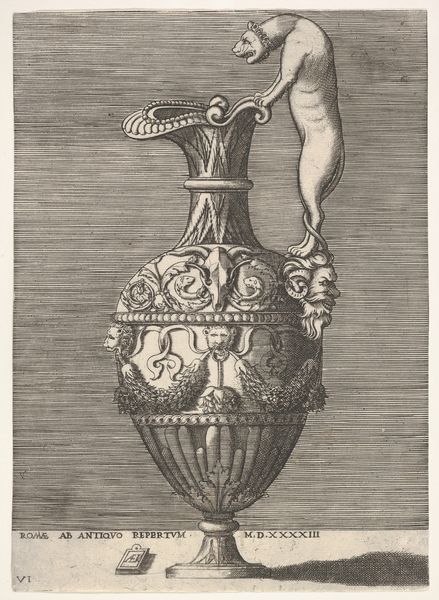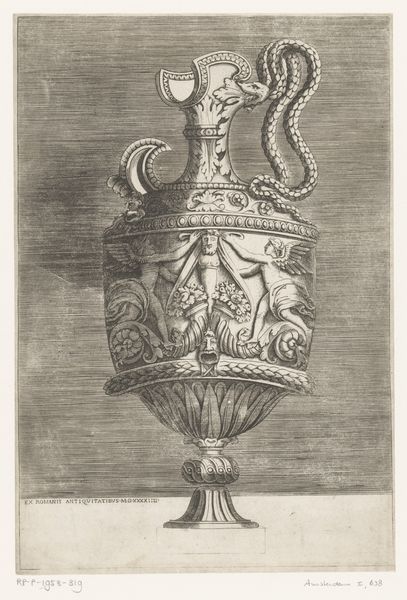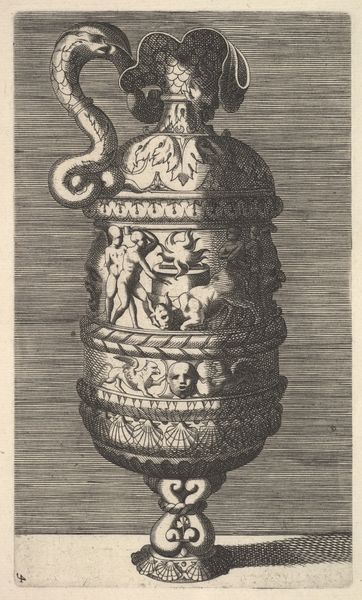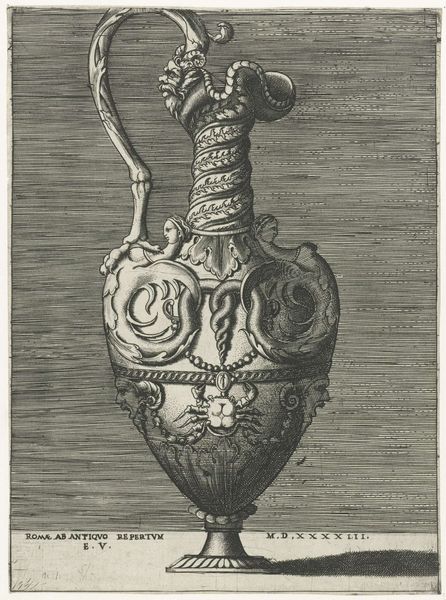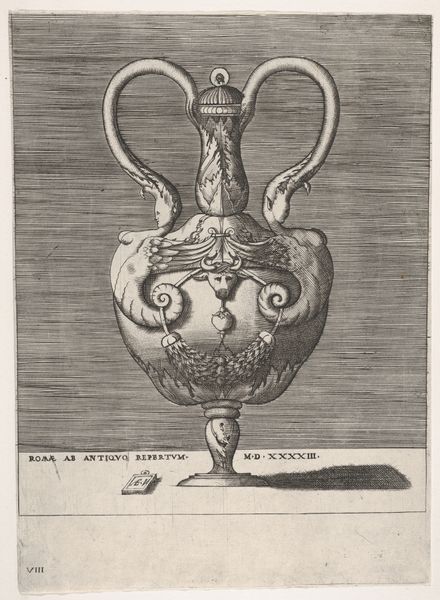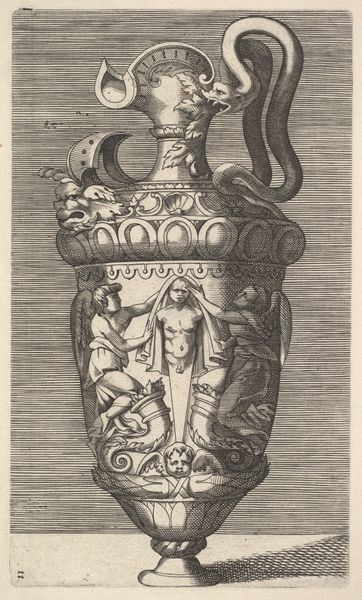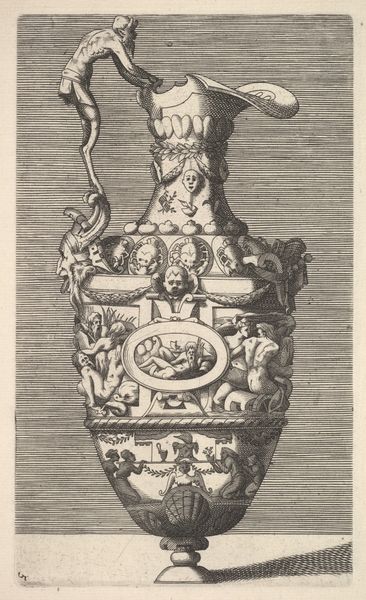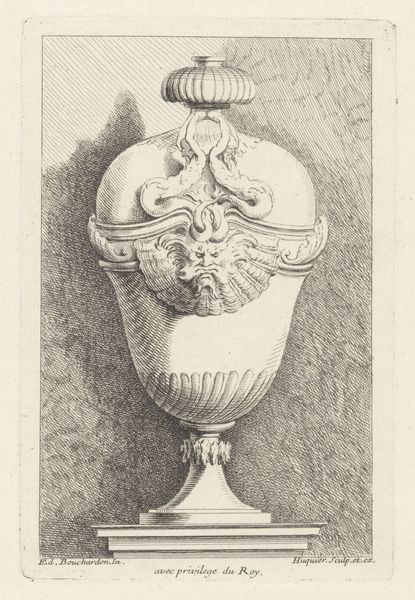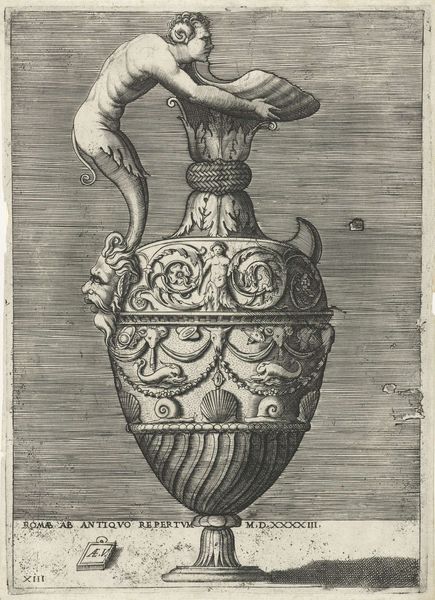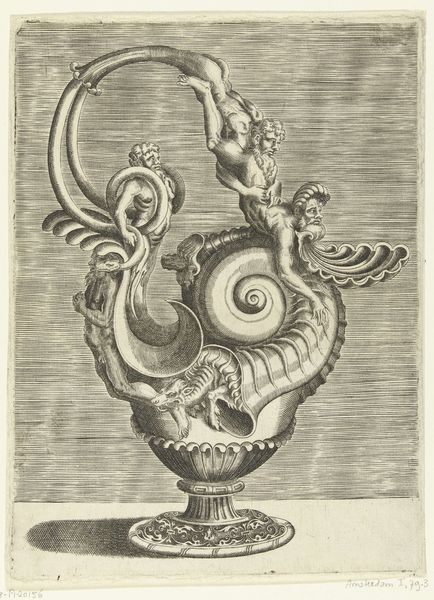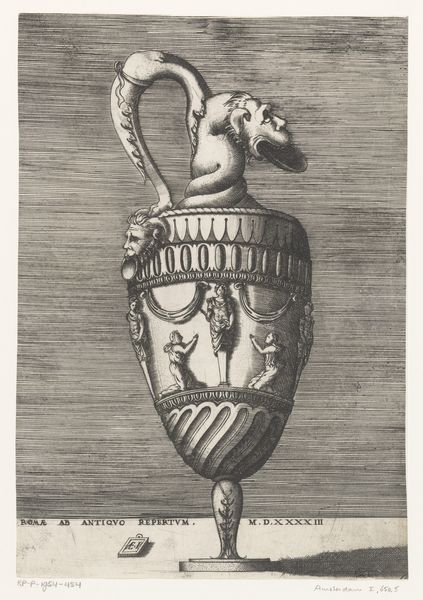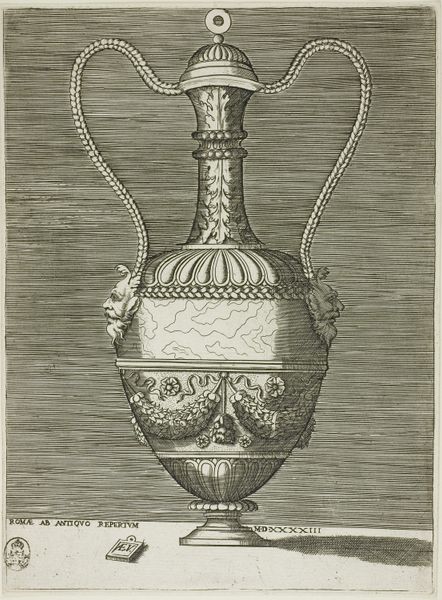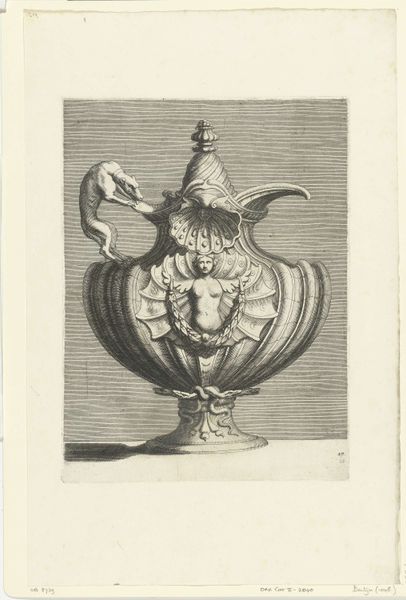
Antique Ewer with a Handle in the Shape of Two Snakes coming from the Head of Medusa below, from Vases after the Antique 1543
0:00
0:00
drawing, print, engraving
#
drawing
# print
#
greek-and-roman-art
#
mannerism
#
figuration
#
form
#
line
#
history-painting
#
engraving
Dimensions: image: 10 9/16 x 7 11/16 in. (26.8 x 19.5 cm) [cropped within plate mark on all sides]
Copyright: Public Domain
Editor: This is "Antique Ewer with a Handle in the Shape of Two Snakes coming from the Head of Medusa below, from Vases after the Antique," an engraving made in 1543 by Enea Vico. There's so much happening—figures, faces, and, of course, snakes. It's visually striking. How do you interpret this work? Curator: I see this engraving as a powerful statement on the complexities of power and representation. Vico is engaging with classical forms, but through a Mannerist lens, exaggerating and manipulating those forms. Look at how Medusa, often portrayed as a monstrous figure, is here integrated into a functional object. How does that affect our reading of her narrative, which often demonizes female power? Editor: That's a really interesting point! It makes you think about how stories and figures get recontextualized. Does the act of recontextualizing impact the status quo of the historical time? Curator: Absolutely. Consider the historical context: 16th-century Europe, a period of intense social and religious upheaval. The revival of classical imagery was a way to legitimize power structures, but artists like Vico often subverted those very structures. By giving Medusa a place on the handle, the idea of ‘handling’ power through the suppression of marginalized figures takes centre stage. What do you make of the vessel’s shape itself? Does it speak to the purpose or its users? Editor: I hadn't considered that deeply. Maybe the ornate design implies that it’s meant to display someone’s wealth and influence, rather than to be used everyday? Curator: Precisely. It is more than just an object; it's a symbol, burdened with gender, identity and power. Editor: Wow, I see so much more in this now. Thanks for unpacking the layered narratives. It really gives you something to think about regarding whose stories are told, how they are told, and how objects participate in these telling. Curator: My pleasure. Engaging with these older pieces teaches us how to think critically about whose stories have historically been privileged and whose have been suppressed.
Comments
No comments
Be the first to comment and join the conversation on the ultimate creative platform.
